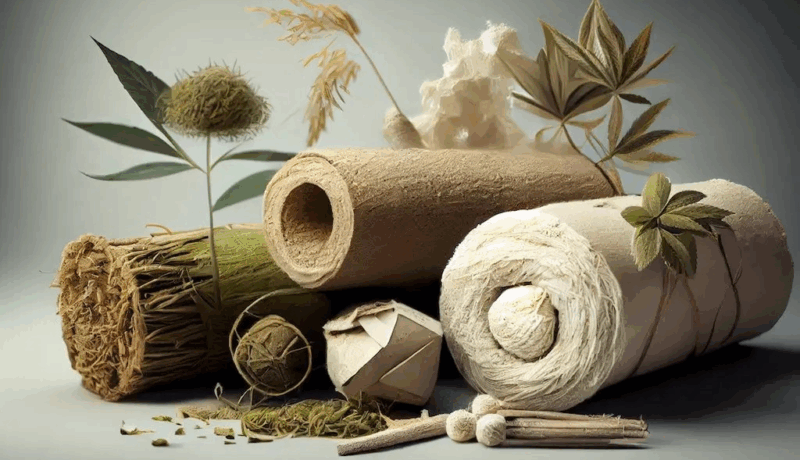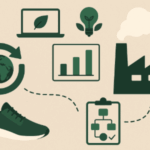
Exploring Sustainable Raw Materials for Your Eco-Friendly Fashion Brand
Starting a new eco-friendly fashion brand is an exciting venture, especially when you aim to make sustainability a core value of your business. Choosing sustainable raw materials is crucial for reducing environmental impact and appealing to eco-conscious consumers.
Fast fashion and plastic-based raw materials contribute significantly to pollution and waste, leading to severe environmental degradation and health issues. In this article, we will explore what sustainable raw materials are, why they are essential for your fashion brand, the types of sustainable raw materials available, their benefits, sourcing options in India, the process of using them, and the carbon emissions associated with each type.
What Are Sustainable Raw Materials?
Sustainable raw materials are resources that are produced and harvested in a way that minimizes environmental impact, promotes biodiversity and supports the livelihoods of local communities. These materials are renewable, biodegradable, and have a lower carbon footprint compared to conventional materials. Examples include organic cotton, hemp, bamboo, recycled fibers, and ethically sourced wool.
Why Choose Sustainable Raw Materials for Your Fashion Brand?
Choosing sustainable raw materials for your fashion brand offers several advantages:
Environmental Impact: Sustainable materials help reduce pollution, save resources like water and land, and cut down on carbon emissions compared to traditional materials that often contribute to environmental harm.
Consumer Demand: As people become more aware of environmental issues, they prefer brands that make sustainable choices. This shift comes from concerns about problems like plastic waste and harmful chemicals in products.
Brand Image: Brands that commit to sustainability show they care about the environment, which sets them apart. Brands ignoring sustainability may risk a negative image, losing customers who value eco-friendly practices.
Regulations and Standards: Using sustainable materials helps businesses follow strict environmental rules. Certifications like GOTS or Bluesign ensure products meet high standards for eco-friendliness, satisfying customers who prioritize sustainability.
What are the Types of Sustainable Raw Materials?
There are varied types of raw materials to choose from so let’s look at some of the most popular ones listed below:
Organic Cotton
Benefits: Organic cotton is grown without synthetic pesticides or fertilizers, preserving soil health and reducing water consumption. It is also safer for farmers and workers due to the absence of harmful chemicals.
Where to Source From: Organic cotton can be sourced from regions like Gujarat, Maharashtra, and Madhya Pradesh, where organic farming practices are well-established.
Process of Using It: Organic cotton is harvested, spun into yarn, and then woven or knitted into fabric. It can be dyed using natural or low-impact dyes.
Carbon Emissions: Organic cotton farming generates up to 46% less greenhouse gas emissions compared to conventional cotton farming, making it a more environmentally friendly choice for fashion brands focused on sustainability.
Hemp
Benefits: Hemp is a highly sustainable crop that requires minimal water and no pesticides. It grows quickly, replenishes soil nutrients, and its fibers are strong and durable.
Where to Source From: Uttarakhand and Himachal Pradesh are leading regions for hemp cultivation in India.
Process of Using It: Hemp fibers are extracted from the plant’s stalks, processed into yarn, and then woven into fabric. Hemp can be blended with other fibers for added softness.
Carbon Emissions: Hemp cultivation absorbs more CO2 per hectare than any forest or commercial crop, making it an exceptionally effective carbon sink and a top choice for eco-conscious fashion brands.
Bamboo
Benefits: Bamboo is a fast-growing, renewable resource that requires no pesticides and very little water. It is naturally antibacterial and biodegradable.
Where to Source From (in India): Bamboo is widely available in North-East India, particularly in states like Assam and Tripura.
Process of Using It: Bamboo is processed into pulp, spun into yarn, and woven into fabric. Mechanical processing is more eco-friendly than chemical processing.
Carbon Emissions: Bamboo absorbs greenhouse gases and releases 35% more oxygen into the atmosphere compared to equivalent stands of trees, making it a powerful ally in combating climate change.
Recycled Fibers
Benefits: Recycled fibers, such as polyester from PET bottles and recycled cotton, reduce waste and conserve resources. They help in reducing landfill waste and the need for virgin materials.
Where to Source From: Companies like Ganesha Ecosphere and Shree Renga Polymers specialize in producing recycled fibers in India.
Process of Using It: Waste materials are collected, cleaned, processed into fibers, spun into yarn, and woven into fabric.
Carbon Emissions: Using recycled fibers in fashion production reduces carbon emissions by up to 75% compared to virgin fibers, demonstrating a significant environmental benefit for brands committed to sustainability
Ethically Sourced Wool
Benefits: Ethically sourced wool comes from farms that practice humane treatment of animals and sustainable land management. It is biodegradable and provides natural insulation.
Where to Source From: Wool can be sourced from regions like Rajasthan and Jammu & Kashmir, where ethical farming practices are promoted.
Process of Using It: Wool is sheared from sheep, cleaned, carded, spun into yarn, and woven or knitted into fabric. Ethical wool production ensures animal welfare and sustainable grazing.
Carbon Emissions: Ethically sourced wool promotes sustainable land management and humane treatment of animals, contributing to lower carbon emissions and aligning with the values of environmentally-conscious fashion brands
What is the Process of Using Sustainable Raw Materials?
Sourcing: Partner with certified suppliers who follow sustainable practices. Look for certifications such as GOTS (Global Organic Textile Standard), Fair Trade, and OEKO-TEX.
Design and Development: Incorporate sustainable materials into your designs. Consider the lifecycle of the product and how it can be recycled or upcycled.
Production: Use eco-friendly production methods, such as water-saving dyeing techniques, renewable energy, and minimal waste processes.
Packaging: Opt for sustainable packaging materials like recycled paper, biodegradable plastics, or reusable packaging.
Conclusion
Exploring sustainable raw materials for your new fashion brand is a vital step towards creating a responsible and environmentally friendly business. By choosing materials like organic cotton, hemp, bamboo, recycled fibers, and ethically sourced wool, you can significantly reduce your brand’s environmental impact while meeting the growing demand for sustainable fashion. Sourcing these materials responsibly, understanding their benefits, and incorporating eco-friendly production processes will set your brand on a path toward sustainability and success.
What is Untrash?
If reading this article on different raw materials that can be explored to create your next fashion brand has made you interested in understanding more about it, that means you care about Sustainability as a business. Untrash enables new-age brands to accurately measure, manage, and highlight the environmental footprint of their organization & products, providing a clear and authentic story of sustainability to consumers and stakeholders with transparency. Book a demo here to learn more about Untrash.


